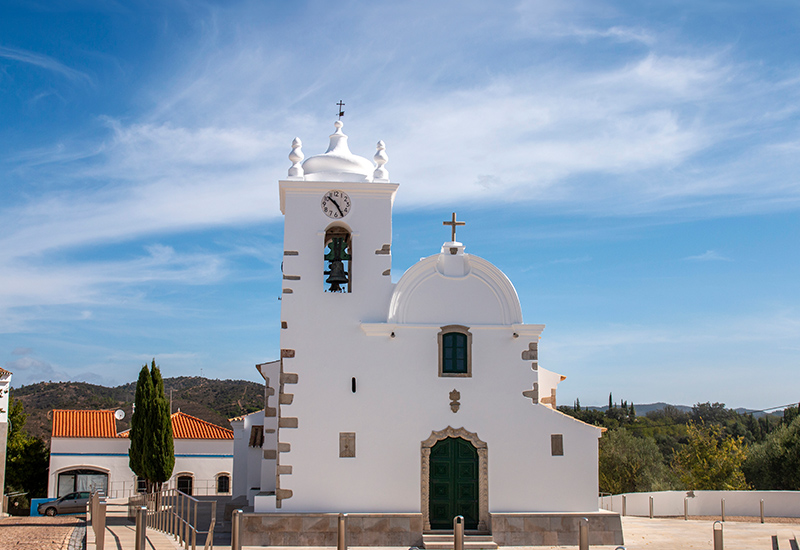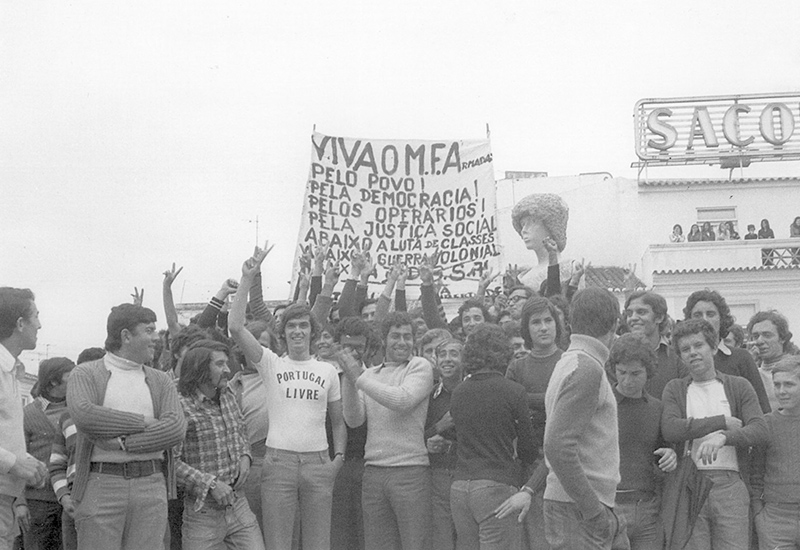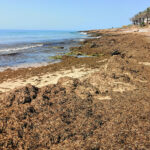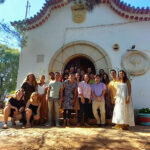The hilltop village of Querença, situated just outside of Loulé, offers peace and tranquillity throughout the year, except for one weekend in January. Every third Saturday in January, this sleepy little village bursts into life for its annual Festa das Chouriças sausage festival, bringing locals and visitors together to celebrate a successful season of pig rearing.
The Festa das Chouriças pays homage to the village patron St. Luís, who is attributed as one of the patron saints of animals and the protector of Querença. At one time it was common in the rural areas of the Algarve and Alentejo for families to own pigs which would be used to feed the family throughout the year. Many would ask St. Luís to protect their drove and livestock so they would have enough food for the whole year. As a gesture of thanksgiving, families would gather in the village square to offer their best homemade sausages to St. Luís, giving the remainder to those in need.
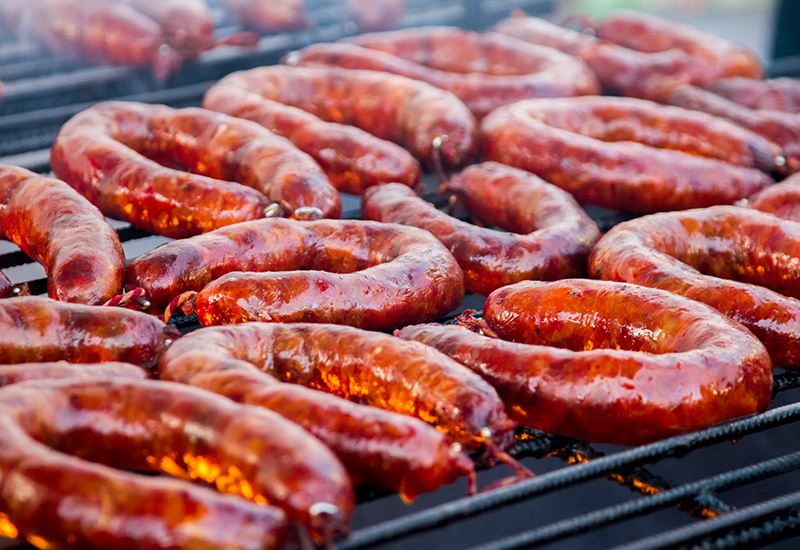
The centuries-old Festa das Chouriças has grown from a small local gathering into a popular gastronomic fair that continues to pay homage to St. Luís and promote local farmers and regional produce. The festival kicks off at approximately 10 am with a special mass held in the village church of Nossa Senhora da Assunção, followed by a solemn procession of bearers carrying the statue of St. Luís, which is paraded around the cobbled streets of Querença before music and the smell of barbecued pork fills the air. Farmers from across the municipality offer their best produce, from pão com chouriço to bifanas, presunto (smoked ham) and, of course, chouriço sausages at this traditional fair that is rooted in rural life and one of the fine examples of Algarvian culture.
As for St. Luís, it is unknown how the XIII century crusader King of France became the patron of this rural Algarvian community nestled in the countryside, nor is it known why he is celebrated in January when his feast day is actually held on 25 August. But his legacy is remembered nonetheless as France’s only king to be canonised and the patron saint of pig rearing.
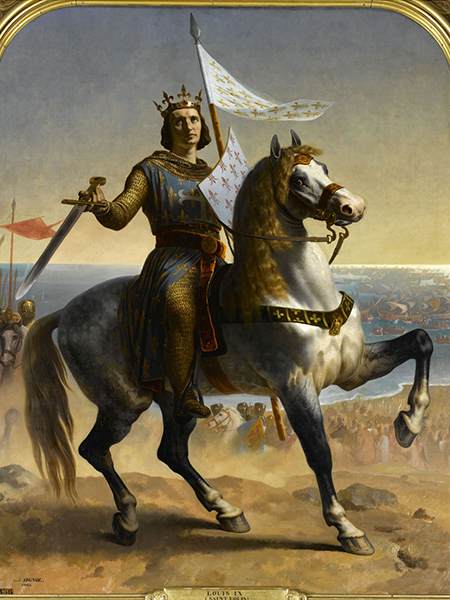
King Louis IX by Émile Signol, Public domain, via Wikimedia Commons
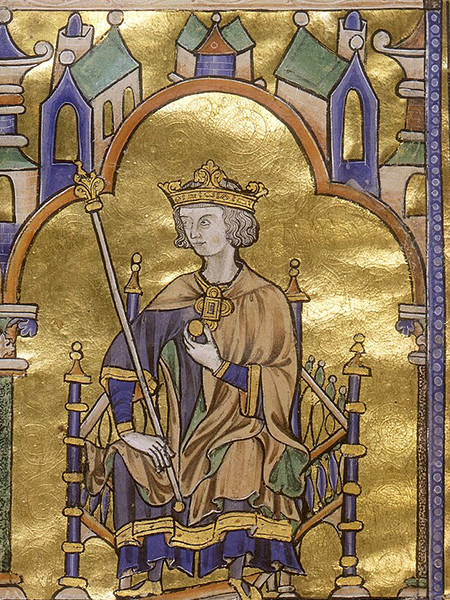
Detail of a miniature representing King Louis IX, known as Saint Louis, in the Moralized Bible of Toledo, known as the Saint Louis Bible, Public domain, via Wikimedia Commons
Born in 1214 in Poissy, France, St. Luís or King Louis IX, reigned over the Kingdom of France from 1226 until his death in 1270. Taking the throne aged just 12, St. Luís would “take the cross” and lead his first crusade in his 30s. One of his most memorable crusades was between 1248 and 1250 when he had hopes of regaining Jerusalem and Damascus; however, his troops were badly defeated by the Egyptians. After living in Syria for four years, St. Luís returned to France and built Sainte-Chapelle to house a relic of the crown of thorns, which today is kept within the Cathedral of Notre Dame in Paris.
Having made peace with the English through the Treaty of Paris in 1259, allowing King Henry III of England to keep the lands of Aquitaine, St. Luís pledged to create better living standards for the people of France. He opened hospitals, cared for the sick, notably those suffering from leprosy, just as his patron St. Francis did before him, and even fed over a hundred poor and homeless people within his own home. One of his most significant legacies was the creation of the French justice system, where petitioners could appeal against judgements directly to the king. In addition, he banned trials by ordeal and introduced the presumption of innocence, where the defendant is deemed innocent until proven guilty.
St. Luís’ reign came to an end during a crusade in North Africa when an epidemic of dysentery swept through his army, killing many, including the king crusader himself. St. Luís died from the plague on 25 August 1270 in Tunis and his body was ceremonially returned to France in a lengthy procession across Sicily, Italy, and the Alps before being interred in the royal necropolis in the Basilica of Saint-Denis in Paris.
His successor and son, Philip III, later dispersed several relics to strengthen the veneration of St. Luís’ legacy, including his preserved heart and intestines, which were saved by St. Luís’ younger brother, Charles I of Naples who buried the organs within the Cathedral of Monreale near Palermo in Sicily.
St. Luís is remembered by his admirers as the ideal Christian ruler. His skills as a knight and his engaging manner with the public made him one of France’s most popular rulers. St. Luís was canonised by Pope Boniface VIII in 1297 at the Papal Palace in Orvieto as St. Luís IX, Confessor of the Church.
Today, the Festa das Chouriças is one of many popular country fairs in the Algarve, welcoming locals and tourists from far and wide. All are eager to immerse themselves in the community spirit, to give thanks to the crusader king, feast on local delicacies and to support the hard-working farmers of Querença.
A Prayer instructed by St. Luís IX to his son, Philip III
O God, we love You.
We want to do nothing to displease You.
If we have troubles, let us thank You.
If we don’t, we also humbly thank You.
Let us look for ways to grow closer to You,
whether in Confession, prayer, or at Mass.
Let us open our hearts to afflicted people
and do what we can to comfort them.
Let us look for ways to improve our society.
Thank You for friends who help us bear
our burdens and help us grow in holiness.
Let us turn away from gossip or swearing.
Let us always do what is right for those
we serve and promote peace among our neighbours.
Let us be quick to defend our Faith.
O Holy Trinity, all You holy saints,
please defend us from all evils.
Please give us grace to do Your will always,
so that You are honoured
and so we may be with You forever.
Amen
Querença’s Festa das Chouriças
Largo da Igreja Nossa Sra. da Anunciação, 8100-127 Querença (Loulé)
